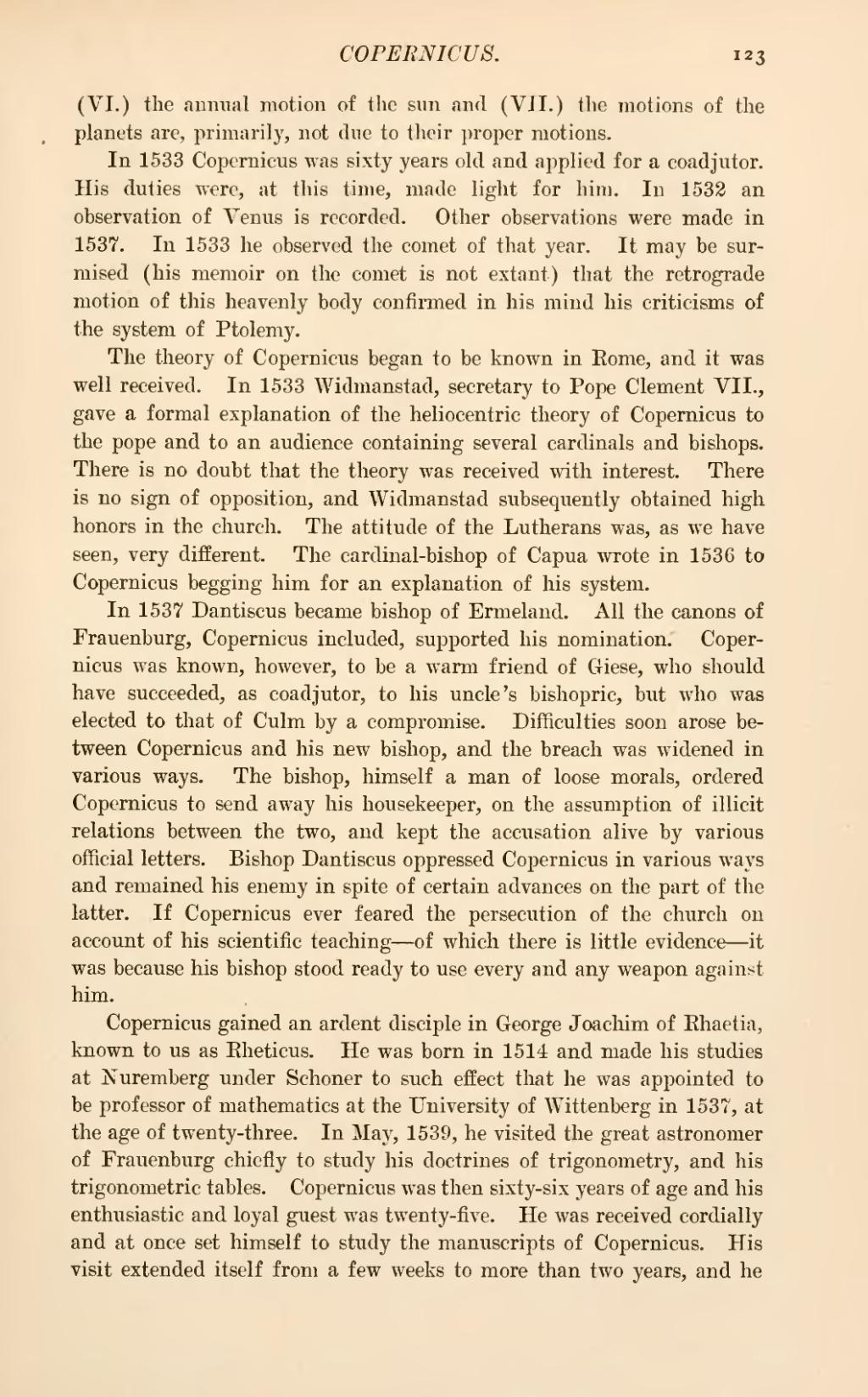(VI.) the annual motion of the sun and (VII.) the motions of the planets are, primarily, not due to their proper motions.
In 1533 Copernicus was sixty years old and applied for a coadjutor. His duties were, at this time, made light for him. In 1532 an observation of Venus is recorded. Other observations were made in 1537. In 1533 he observed the comet of that year. It may be surmised (his memoir on the comet is not extant) that the retrograde motion of this heavenly body confirmed in his mind his criticisms of the system of Ptolemy.
The theory of Copernicus began to be known in Rome, and it was well received. In 1533 Widmanstad, secretary to Pope Clement VII., gave a formal explanation of the heliocentric theory of Copernicus to the pope and to an audience containing several cardinals and bishops. There is no doubt that the theory was received with interest. There is no sign of opposition, and Widmanstad subsequently obtained high honors in the church. The attitude of the Lutherans was, as we have seen, very different. The cardinal-bishop of Capua wrote in 1536 to Copernicus begging him for an explanation of his system.
In 1537 Dantiscus became bishop of Ermeland. All the canons of Frauenburg, Copernicus included, supported his nomination. Copernicus was known, however, to be a warm friend of Giese, who should have succeeded, as coadjutor, to his uncle's bishopric, but who was elected to that of Culm by a compromise. Difficulties soon arose between Copernicus and his new bishop, and the breach was widened in various ways. The bishop, himself a man of loose morals, ordered Copernicus to send away his housekeeper, on the assumption of illicit relations between the two, and kept the accusation alive by various official letters. Bishop Dantiscus oppressed Copernicus in various ways and remained his enemy in spite of certain advances on the part of the latter. If Copernicus ever feared the persecution of the church on account of his scientific teaching—of which there is little evidence—it was because his bishop stood ready to use every and any weapon against him.
Copernicus gained an ardent disciple in George Joachim of Rhaetia, known to us as Rheticus. He was born in 1514 and made his studies at Nuremberg under Schoner to such effect that he was appointed to be professor of mathematics at the University of Wittenberg in 1537, at the age of twenty-three. In May, 1539, he visited the great astronomer of Frauenburg chiefly to study his doctrines of trigonometry, and his trigonometric tables. Copernicus was then sixty-six years of age and his enthusiastic and loyal guest was twenty-five. He was received cordially and at once set himself to study the manuscripts of Copernicus. His visit extended itself from a few weeks to more than two years, and he
